#the others are Stephen Stills and The Lovin' Spoonful
Explore tagged Tumblr posts
Text
No joke, 85% of my top 100 songs this year are Monkees or Monkees related (all but 1 song is you loosely define “Monkees related”)
#the one song is Penis Music by Portamento#the others are Stephen Stills and The Lovin' Spoonful#the monkees#peter tork#mike nesmith#davy jones#michael nesmith#davy jones the monkees#monkees#micky dolenz#stephen stills#csny#the lovin' spoonful#john sebastian
7 notes
·
View notes
Photo





Stephen Stills and Peter Tork, early 1960s (screenshot from Peter’s My Generation interview); and later that decade (photos by Michael Ochs Archives, and Nurit Wilde).
“I first saw Peter Tork in Greenwich Village at a coffee house called the Four Winds, which stands on West Third Street, about 25 yards from the subway entrance and about 25 yards from the now-famous Night Owl, birthplace of the now-famous Lovin’ Spoonful. He and I, as well as my roommate, John Hopkins, were all playing the basket houses. Peter played guitar and banjo and sang songs of social import, big, heavy ballads, Phil Ochs’ tunes and occasionally, a show tune. We all met through Peter’s girlfriend, who introduced us at the club. Soon after, we decided to form a trio… Peter, John and myself. I don’t remember if we had a name, or if we did, what it was. We tossed a lot of names around. [...] Now, Peter has turned to rock and roll. I think it is because he realized that he is just as good a comedian as he is a musician. And he was then. He used to have some phenomenal bits. The best was his basket pitch. Everybody had to have a pitch as to how to tell the people after they had been soaked a dollar and a half for a cup of coffee that they had to drop something in the basket to pay the performer. You see, it was against the law for the coffee houses to pay entertainers because they didn’t have cabaret licenses, which cost a whole lot of money in New York City. There’s always a law in New York City! Anyway, your pitch had to let the people down easy and not make you look like a beggar… it had to be very diplomatic. Peter’s went like this: There would be a basket at the corner of the stage and Peter would gaze over at it and say, ‘Look at the basket. What is in the basket? A baby? No, more’s the pity! There is nothing in the basket. What goes into the basket has to be provided by you (pointing at the faces in the crowd), because there is a law in New York City…’ Another was: ‘Now, ladies and gentlemen, since there is a law in New York City that says that singers like myself and my cohorts cannot be paid for singing our beautiful songs for you, I am going to come around with my banjo, which is empty (he would tap it to accent the hollow sound) and accept your kind offerings. For those of you who wish to give a dollar, I’ll yell “swish” so everybody will know you’re not a piker!’ Peter has a very active mind.” - Stephen Stills, TeenSet, June 1967
“I can remember the first time I met Peter. For four days beforehand I heard from everyone ‘Hey! Have you seen the kid down the street that looks just like you?!’ And Peter told me later that he heard the same thing for approximately the same amount of time.We finally ran into each other at the Four Winds Cafe and he said to me, ‘Oh, hi! You’re the kid that looks like me!’ And that’s how we met. [...] I liked Peter right away. I thought he was a really nice guy. He was very warm and very open and willing to talk and communicate and so forth. I knew him before I ever saw him perform. But Pete has had a great effect on the way I perform. The way he used to move, the way he used his accent, his whole attitude toward the theater, the entire theater, gave him a great basis from which to work. He never looks past the fact that he’s supposed to be up there: to entertain the people. And every time he got up there he would perform and do his whole number, exuding all the personality he could and he did some marvelous comedy routines. It was mostly by watching him that I picked up some of those things.” - Stephen Stills, Tiger Beat, June 1967
“I did some work accompanying Steve Stills when he was with Ron Long and the Buffalo Fish. I accompanied this black trio called the [Apollas], on the stand-up string bass.” - Peter Tork, Goldmine, May 1982
“Steve was a friend of mine on the Village streets in early ‘60s. He, as a matter of fact, hit town and became instantly known as that guy who looks like Tork, which was my name in those days. And I ran across him on the street. I said, ‘I know who you are. You’re the kid who looks like me.’ He said, ‘I know who you are. You’re the kid I’m supposed to look like.’” - Peter Tork, NPR, June 1983
“The two became friends and began to perform together.” - Los Angeles Times, October 1992
“He was another Greenwich Village folkee in the days when there were a lot of Greenwich Village folkees. He worked there for three years singing and accompanying groups like the Phoenix Singers and he might still be back there today if it weren’t for Steven Stills. The producers of this T.V. show liked Steven Stills fine, his music and everything. Everything except his screen test. He wasn’t, in their words, photogenic enough. So they asked him if he knew anybody who was like him that photographed a little better. Steven Stills told them about this kid in the Village he knew who looked a little like him. Peter Tork. Peter Tork went down and got the part that Steve Stills almost had. Peter Tork became a Monkee.” - San Diego Reader, December 1973
“The first thing I said to the producer, Bob Rafelson, was, ‘If you don’t like me, I know a guy who looks enough like me to be my brother, who’s a better actor and has straight teeth!’ I told Peter about it because I knew he was a better comedian. After he went down for the first interview, I asked how how he felt he did and he said, ‘Well, it looks good. I’ll see how things go.’ And they kept calling him back. He liked Michael Nesmith. That was the first thing that happened. [...] When we’re not playing music or listening to music, we’re usually picking things apart — groups, ideas we hear from people, pieces of music, each other’s brain. The quality I respect, more than anything else in Peter, is his honesty. More than any person I know, Peter gives of himself. If you have a problem you can always depend on him for some kind of answer or some kind of suggestion, no matter what it is. He doesn’t worry about offending you, because he just wants to be honest. To me, that’s being a true friend.” - Stephen Stills, Tiger Beat, July 1967
“Steve, as you may have heard, was the guy who looked like me on the Greenwich Village streets who later turned me on to the Monkees, because they liked him, but they thought his hair and teeth were not telegenic and, ‘Did he know anybody more telegenic with a 10th of his talent?’ Of course, Stephen had to go on and suffer with Buffalo Springfield and Crosby, Stills, Nash and Young. [laughs] Of course, two or three times, Stephen didn’t know which way to turn sometimes, and I was able to offer him my hospitality. When I had the big house, he came up, and for a while, I vacated the big house, and Crosby, Stills, Nash and Young were staying there. The Stones stayed there for a week once, under Stephen’s aegis. He had them come over, and I think he cleared out for a week while they stayed there. That was pretty cool.” - Peter Tork, Rolling Stone, 2007; published 2019
“Stephen Stills and I have been pals for years and years.” - Peter Tork, The Daytona Beach News-Journal, October 2009
#Peter Tork#Stephen Stills#early 1960s#1960s#60s Tork#Tork quotes#screenshots#The Monkees#Monkees#Buffalo Springfield#et al#<3#long read#'a 10th of his talent' well I'd respectfully disagree PT#Davy Jones#Michael Nesmith#Micky Dolenz#really long read#Tork performances#1964#1965#1966#1967#1968#San Diego Reader#tiger beat#Rolling Stone#Daytona Beach News-Journal#can you queue it
120 notes
·
View notes
Note
multiples of 5 for that ask meme
this is gonna be a slightly abbreviated version just cos of how many songs i have on here but here we go (under the cut so i’m not internationally hated)5: Which songs have “dream” in the title Dream Lover-DionDream Police- Cheap TrickDon’t Dream It’s Over- Crowded HouseDream a little dream of me; california dreamin’-the mamas and the papasSweet Dreams-EurythmicsDream- Mahavishnu OrchestraAnd Dream of Sheep;An Architect’s Dream;The Dreaming- Kate BushAmerican Dream;Dream For Him;Find A Dream;House Of Broken Dreams;In My Dreams-CSNYDream-Tally HallAsleep and Dreaming; Busby Berkeley Dreams-The Magnetic FieldsApocalypse Dreams-Tame ImpalaBoulevard of Broken Dreams-Green DayCircle Dream-10000 ManiacsCountry Dreamer- WingsCowboy of Dreams;Shinin On Your Dreams- Crosby NashCity of Dreams; Dream Operator- Talking HeadsCaught In A Dream-Alice CooperDeadly Dream of Freedom- TriumviratDream Again;Lucid Dreams-Franz FerdinandDream Attack-New OrderDon’t Let Me Lose This Dream- Aretha FranklinDay of The Dreamer-RenaissanceDream Away;Dream Scene-George HarrisonA Dream Away-The CarsDream Clock-Weather ReportA Dream Goes On Forever- Todd RundgrenThe Dream Nebula-NektarDream of The Archer;Dreamboat Annie-HeartDream One;Dreaming From The Waist-The WhoThe Dream of Blue Turtles-StingDream Police-Gary NumanDream Time;The Planner’s Dream Goes Wrong-The JamDream Within A Dream-PropagandaDream Within A Dream-SpiritDream Within A Dream-Alan Parsons ProjectThe Dream’s Dream-TelevisionDream World-The MonkeesDreamer-SupertrampThe Dreamer-Nicky HopkinsDreamer’s Ball-QueenDreaming-PolystyreneDreaming;Dreaming Is Dangerous-Bruno CoulaisDreaming of 4000;One Summer Dream;Ordinary Dream-Electric Light OrchestraDreaming of Me-Depeche ModeDreaming While You Sleep-GenesisDreamline;Middletown Dreams-RushDreams;Flash’s Dream;Only A Dream-The KinksDreams-Fleetwood MacDreams-Allman Brothers BandDreamtime;Endless Dream;Sweet Dreams-YesDreamy Lady-T RexxEverybody Has a Dream-Billy JoelFever Dream-Nash The SlashFurther Than Funk Dream-Medium MediumGirl of My Dreams-Charles MingusGasoline Dreams- OutkastHad A Dream (Sleeping With The Enemy)-Roger HodgsonThe Gunner’s Dream;Julia Dream;Post War Dream-Pink FloydHere I Dreamt I was An Architect- The DecemberistsI Don’t Sleep I Dream-REMHung Up On A Dream;Is This The Dream- The ZombiesI Dream Myself Alive-A -HaI Dreamaed There Was No War-The EaglesI Had Too Much To Dream Last Night-The electric PrunesI’m Only Dreaming-Small FacesIn Every Dream Home A Heartache- Roxy MusicInfinite Dreams-Iron MaidenIs It A Dream;Street of Dreams- The DamnedIt’s Only A Dream-TrapezeJohnny Panic and The Bible of Dreams-Tears For FearsLittle Dreamer- Van HalenKeep Dreaming-Pineapple ThiefMaximum Dream For Evil Knieval-Flaming LipsMoney Honey Impossible Dream-The Sensational Alex Harvey BandMusic In Dreamland-Be Bop DeluxeNew Gold Dream-Simple MindsNice Dream-RadioheadRainy Day Dream Away;Still Raining Still Dreaming-Jimi Hendrix ExperienceQueen of Dreams- StrawbsRed Brick Dream-XTCRunnin Down A Dream-Tom PettyRado’s Dream-FoxygenSex Sleep Eat Drink Dream-King CrimsonSleep of No Dreaming;Stupid Dream-Porcupine TreeSome Dreams Come True-BanglesThe State of Dreaming- Marina And The DiamondsSweet Dreams- BeyonceThese Dreams-Jim CroceTomorrow’s Dream-Black SabbathWeird Dream-HarmoniaWest County Dream-Mountain GoatsWhen Poets Dreamed of Angels-David SlyvainWildest Dreams-AsiaYou Make My Dreams Come True-Hall & Oates40 Day Dream-Edward Sharpe and The Magnetic Zeroes10: Which songs have “blue” in the titleBlue;Blue Boy;Blue Motel Room-Joni MitchellBlue-Fine Young CannibalsAcute Schizophrenia Paranoia Blues-The KinksAll Blues;Blue In Green-Miles DavisAeroplane Blues-Black KeysAmbulance Blues;Blue Eden-Neil YoungAntichrist Television Blues-Arcade FireBaby Blue-BadfingerBaby’s Tears Blues- Mort GarsonBacklash Blues;Blues;Central Park Blues;Gin House Blues;Little Girl Blue-Nina SimoneBallet For A Blue Whale-Adrian BelewBehind Blue Eyes; Red Blue and Grey;Summertime Blues-The WhoBeyond The Blue Horizon;9 Times Blues-Michael Nesmith And The First National BandBirmingham Blues;Mr Blue Sky;Boy Blue;Bluebird;Bluebird is Dead-Electric Light OrchestraBlonde Over Blue-Billy JoelBlowing The Blues Away-Max WebsterBlue As a Jewel-Be Bop DeluxeBlue Beard-Band of HorsesBlue Cheese- Courtney BarnettBlue Days Black Nights-Buddy HollyBlue Eyes- Elton JohnBlue Jay Way;For You Blue-The BeatlesBlue Letter;Jigsaw Puzzle Blues-Fleetwood MacBlue Light-Mazzy StarBlue Light-UltravoxBlue Monday-New OrderBlue Oyster Cult (Subhuman)-Blue Oyster CultBlue Overall-XTCBlue Orpheus;Drunken Blue Rooster-Todd RundgrenBlue Nile-Alice ColtraneBlue Rhumba-Aqua VelvetsBlue Ridge Mountains;Blue Spotted Tail- Fleet FoxesBlue Room In Venice-Rick WrightBlue Sky-A-haBlue Sky;Come And Go Blues-Allman Brothers BandBlue Suede Shoes;Cocaine Blues;Folsom Prison Blues-Johnny CashBlue Sunday;Runnin Blues-The DoorsBlue Turk-Alice CooperBlue You-Magnetic FieldsBluebird-WingsBluebird-Buffalo SpringfieldBluebird Revisted-Stephen StillsBluejays and Cardinals;Blues In Dallas-Mountain GoatsBlueprint-FugaziBlues De Luxe-Jeff Beck GroupBlues From An Airplane;Chauffer Blues;Eskimo Blue Day-Jefferson AirplaneBlues Man-ManassasBrilliant Blues-Pete TownshendBlue Angel-MarillionBristol Steam Convention Blues-The ByrdsBullet The Blue Sky-U2Buried Alive In The Blues;Kozmic Blues-Janis JoplinCan Blue Men Sing The Whites-Bonzo Doo Dah Dog BandCharlie Manson Blues-Flaming LipsCatfish Blues-Jimi HendrixClear Blue Skies;Suite Judy Blue Eyes-CSNYCrazy Lady Blue-UtopiaComputer Blue-PrinceDamn Right I Got The Blues-Buddy GuyDeep Blue;Electric Blue-Arcade FireDeep Blue;Devil And The Deep Blue Sea;Marwa Blues-George HarrisonDeeper Blue- Bruford Levin Upper ExtremitiesDachau Blues- Captain BeefheartEarly Morniing Blues and Greys;Papa Gene’s Blues;Some of Shelly’s Blues-MonkeesElectric Blues- HairEmpty Bottle Blues-TMBGEvening Blues-TrafficEstablishment Blues-RodriguezEveryday I Have The Blues-Rolling StonesFeelin Blue-CCRGoodbye Blue Sky;Jugband Blues-Pink Floydh20gate Blues-Gil Scott Heron and Brian JacksonHobo’s Blues-Paul SimonHoneymoon Blues;Cross Road Blues;Me and The Devil Blues;;etc-Robert JohnsonI’m So Blue-Michael JacksonInner City Blues-Marvin GayeInvitation To The Blues-Tom WaitsIt’s All Over Now Baby Blue;Tangled Up In Blue-Bob DylanJeff’s Blues;The Nazz Are blue-The YardbirdsOut Of The Blue-Roxy MusicLooking Good In Blue-BlondieMy Melancholy blues-QueenNew Blue Moon-Traveling WilburysNight Owl Blues-Lovin SpoonfulOoby Scooby Doomsday or The D Day DJ’s Got The DDT Blues-GongOtherness Blue-Sun RaPink And Blue-OutkastPoor Boy Blues- Barclay James HarvestProtex Blue-The ClashProzakc blues-King crimsonRainbows All over Your Blues-John SebastianRunning Gun Blues-David BowieSame Old Blues-Bryan FerrySeem To Have The Blues All The Time-Procol HarumSepository Nihlist Blues-FoxygenScrew You (Young Man’s Blues)-Elton JohnSky Blue-Peter GabrielSittin And Cryin The Blues-Willie DixonTurn Blue-Iggy PopWildwood Blues- NazzWinter Is Blue-Vashti BunyanWoman’s Blues-Laura NyroWorn Out Blues- Gotye9-5 Pollution Blues- Neil Innesi give up -_-
15: Which song titles start with “Where”Where Have All The Flowers Gone-Joan Baezit’s 3 am now i am giving up
20: Which song titles start with “Good”
25: A song with a strange title In And Out The Chakras We Go (Formerly Shaft Goes To Outer Space)- Todd Rundgren30: The very last song on your list of songs35: A song longer than 10 minutes (a sampling) (i apparently have hundreds) Singring And The Glass Guitar (An Electrifyed Fairytale)-Utopia (18:22)Healing-Todd Rundgren (20 min)Supper’s Ready-Genesis (23 min)Echoes- Pink Floyd (23 min)A Plague Of Lighthouse Keepers- VDGG (23 min)Ommadawn-Mike Oldfield (32:50)Mountain Jam-Allman Brothers (33:50)Treatise on Cosmic Fire- Todd Rundgren (35:19)Thick As A Brick-Jethro Tull (42:53)The Ikon (live)-Todd Rundgren’s Utopia (45 min)Journey To The Center of The Earth-Rick Wakeman (54:20)40: The first 5 songs that play when you hit “shuffle”Breakaway-The CarsMutual Surrender (What A Wonderful World)-Bourgeois TaggPassover-Joy DivisionLunar Sea-CamelJingo-Santana
2 notes
·
View notes
Photo
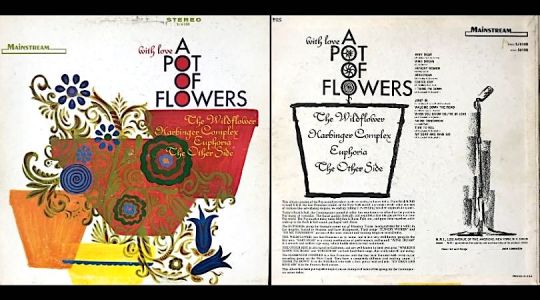
With Love A Pot of Flowers - Various Artists
This release was compiled for and issued on producer Bob Shads’ Mainstream Records, a Chicago-based label. Four bands representing the rising garage and psychedelic music scene were brought together on one disc, San Francisco Bay Area groups, The Wildflower, Harbinger Complex, and The Other Side, plus Euphoria, a band out of Los Angeles with a brief stay in Texas. While none of these bands recordings reached a high success level, some of them are of memorable quality with some reaching a cult status among garage and psychedelic music enthusiasts. This record encapsulated the amazing things that were happening invthe Bay Area just before the major labels showed up. With Love A Pot of Flowers was released on October 21, 1967. I picked up on this album while perusing my favorite record store in the shopping center across from my high school. Besides my curiosity about this rather unique collection, I had heard of a couple of the bands. Harbinger Complex and Wildflower, that were held in some esteem by one of my respected friends. I decided to make the purchase after giving it a spin on the store platter. I found most of the songs to be very enjoyable, with some of them sounding quite unique to my developing musical ear. In doing my research on this album I immediately discovered that it had been later reissued on another label with twelve additional tracks, eight of them by six other bands that were on either the Mainstream or Brent labels, and four being mono versions of some of the original cuts. Bob Shad, the producer, A&R, and record label owner, was responsible for this and a number of other records released from the 1940s through the rest of the 1960s. Starting in the ‘40s he started producing blues, R&B and jazz albums and also began traveling to locations in the south to do location recording of blues and R&B acts that he found. He created several record labels starting with Sittin’ In With, followed by EmArcy and Time. He started the Brent label which focused mostly on West Coast acts,, and finally in 1964 he founded Mainstream Records. He again went on a location recording journey, this time heading west and managed to land in San Francisco and Los Angeles at a golden moment. After producing several unsuccessful singles, including ones by both SF Bay Area and L.A. bands, he made the decision to gather some of the best of what he had and release them on With Love A Pot of Flowers. It was one of the earliest of several rock albums on his label through the rest of the ‘60s, including the first Big Brother and the Holding Company record, and the first three Amboy Dukes albums, which introduced Ted Nugent to the world, for better or worse.
Side One
The Wildflower - Baby Dear
recorded 1966 Mainstream Records * origin San Francisco CA
The Wildflower - Wind Dream
recorded 1966 Mainstream Records * origin San Francisco CA
Euphoria - Hungry Woman
recorded 1966 Mainstream Records
The Other Side - Streetcar
recorded 1966 Brent Records * origin Fremont CA
The Wildflower - Coffee Cup
recorded 1966 Mainstream Records * origin San Francisco CA
Harbinger Complex - I Think I’m Down
recorded 1966 Brent Records * origin Fremont CA
Side Two
The Wildflower - Jump In
recorded 1966 Mainstream Records * origin San Francisco CA
The Other Side - Walking Down the Road
recorded 1966 Brent Records * origin Fremont CA
Harbinger Complex - When You Know You’re in Love recorded 1966 Amber Records * origin Fremont CA
Euphoria - No Me Tomorrow
recorded 1966 Mainstream Records
Harbinger Complex - Time to Kill * origin Fremont CA
recorded 1966 Amber Records
Harbinger Complex - My Dear and Kind Sir
recorded 1966 Brent Records * origin Fremont CA
The Wildflower - Stephen Ehret - Rhythm Guitar, Lead Vocals, Tom Ellis - Drums, Teddy Schneider - Percussions Vocals John Jennings - Bass Michael Brown - Guitar * past member Lee Chandler - Guitar
The beginnings of Wildflower occurred at California College of Arts and Crafts in 1965 with band members Ehret, Ellis, Schneider, Jennings and Chandler. Ehret was the primary songwriter and at times collaborated with poets Michael McClure and Michael “Spike” McCausland as well as other band members. After Chandler left the band found Michael Brown to play lead guitar. The group was in the first wave of bands to mature as the psychedelic era swept in with the Summer of Love.
Up in Virginia City, Nevada restoration had been completed on a building that became the Red Dog Saloon, famous as the beginnings for the seminal Charlatans. After they had played there for one summer the owners decided to audition more bands to play the next summer. In 1966 The Wildflower and Big Brother and the Holding Company joined The Charlatans in rotation throughout that summer at the saloon. The Red Dog Saloon connection to the San Francisco music scene soon led to some of the folks involved in the Red Dog coming down to the city and establishing The Family Dog at The Avalon Ballroom. Wildflower played that Ballroom, The Fillmore, The Matrix, The Tripps Festival as well as touring extensively. The four Wildflower cuts on A Pot of Flowers were recorded in 1966. Baby Dear and Wind Dream were on the band’s only single. The band continued on in one form or another until 1972.
In 2008 Ehret, Ellis, Jennings and Brown, together with guitarist Bannon and keyboardist Robert South reunited. This lead to the recording of several new songs that Stephen Ehret had composed over time. The result was the album Wildflower - 40 Years in a Blink of an Eye which was released in September of that year on Wildflower Records. Wind Dream and Coffee Cup were included on it along with newer songs. Stephen Ehret is still performing regularly in the SF Bay Area (except for the current COVID-19 shelter in place order) as of this writing.
Euphoria - Hamilton Wesley Watt Jr. - Vocals. Guitar William “Bill” D. Lincoln - Guitar, Bass David Potter - Drums Peter Black - Bass James Harrell - Guitar
Euphoria evolved from a band called The Bushmen, which was formed in Cleveland, Ohio by Wesley Watt. He had enlisted drummer David Potter (from who’s biography much of this information is obtained) after seeing Potter play with another band in a local club, The Clinton Bar. Not long after, in May 1965, Watt, the then 16-year old Potter plus Paul Armstrong, and Carl Johnson moved to Los Angeles where they quickly became the house band at the club, Guys and Dolls. Eight weeks later they had signed with Colpix Records, along with Platters manager Buck Ram as their manager. While it is not clear what happened with Armstrong and Johnson, by the time they recorded their only single, Bill Lincoln seemed to have become part of the band. Their only single was released in June, “Baby” backed by What I Have I’ll Give to You”, the latter being co-written by Lincoln. Bill had relocated from Seattle by at least 1963 as he co-wrote the song Walk on the Surf Side b/w lost Love by The Nova-Tones. Presumedly the same Bill Lincoln.
The Bushmen were getting a lot of attention and notoriety. This caught the attention of director David L. Wolper, who was looking for bands to be in a TV documentary he was going to film, Teenage Revolution, enlisted the band along with four others, including The Lovin’ Spoonful. Footage of the The Bushman playing a gig ended up being shot for the film in Lancaster CA. Over the next few months Watt, Lincoln (and likely Potter) recorded four more songs. In August they released a single as The War-Babies containing Jeanie’s Pub b/w Love is Love on Highland Records, followed by Now It’s Over b/w So Little Time under the moniker The WordD on Brent Records.
It was soon after those recordings that the group became Euphoria and they started touring under that name. During a successful tour in Texas they picked up two new members from the band The Misfits, Peter Black on bass and James Harrell on guitar, and ended up staying there for awhile. While in Houston in 1966 new tracks were recorded, none of them released at the time. Four of those tracks surfaced in1982 when Texas Archive Records released them on the Houston Hallucinations record. According to the Opulent Conceptions blog, “The band had other unreleased Texas recordings which await reissue”. There was no indication whether that has ever happened. Returning to Los Angeles, Bob Shad of Mainstream (and Brent) Records recorded four songs with Euphoria at a session in December 1966 at United Studios in Hollywood. A single was released containing two of them, Hungry Woman and No Me Tomorrow, both of which ended up on the collection, With Love A Pot of Flowers. In the extended version of the album released later the two songs by The WordD also appeared. The other two unreleased tracks that were recorded in Dec. ’66 were lost.
Around this time Bill Lincoln got married and moved to England and Euphoria basically dissolved once the single failed to have any impact. Black and Harrell rejoined The Misfits back in Texas, and the band became Lost and Found. Watt and Potter joined the Lee Michaels band and toured and ended up playing on his album Carnival of Life. After friction with Michaels during the recording came to a head, Watt ended up playing on an album by East Side Kids. Bill Lincoln returned to LA and he and Wesley Watt created their masterpiece album under the name Euphoria, A Gift From Euphoria, released on Capitol Records in 1968. David Potter was also credited along with guitarist Doug Delain. While it was not a big seller it has become a much sought after collectors album and has been re-released twice as a CD on two other labels.
Watt, Potter and Lincoln all continued in music into the early ‘70s through various projects. together or separately with other artists. For a time Potter, after becoming a sought after session drummer, moved to Houston and ended up on an album with Endle St. Cloud (Alan Mellinger), in which Black and Harrell were also involved. Per the article in Garage Hangover “Bill Lincoln recorded an album with his wife Lynda and friends as Addie Pray. Late for the Dance went unreleased for years”. It was then made available on CD Baby, which has since retired its’ music store in March 2020. It appears they live in Western Washington. After marrying his wife David Potter moved to her home state of Wisconsin, passing away of ALS (Lou Gehrig’s Disease in 2011. Wesley Watt left LA in the ‘70s, moving to Northern Minnesota and worked in logging. He built his own recording studio and helped produce an album with a successful single for the band Whiskey River. After serving in the military for about three years he returned to LA for a while. He then moved to Sheboygan WI by invitation of his sister and had a few businesses there before passing away in 2015 after a three year battle with cancer.
-While researching the subject of Euphoria it became apparent that there was a certain amount of conflicting information as well as some conjecture in regards to the factualness of some of that information. At first it was difficult to find out much at all, but over a period of three days much more presented itself. The goal was to gather the information that seemed to have veracity while attempting to use as little of my own conjecture as possible. I think I have done a reasonable job of pulling the story of Euphoria into a cohesive and fulfilled description.
The Other Side (Otherside, Topsiders) -, Vocals Ken Matthew - Drums Tom Antone - Bass Ned Torney - Guitar, Keyboards, Vocals Martin Van Slyke Battey - Harmonica, Guitar, vocals Alan Graham - Guitar * past members Jim Sawyers - Guitar David Tolby - Guitar Skip Spence - Rhythm Guitar Danny Phay - Vocals, Jo Kemling - Keyboards The Other Side, or Otherside as some sources refer to it, was originally formed in Fremont CA as a surf band called The Topsiders by Sawyers, Matthew, Antoine and Tolby. Skip Spence was with them briefly and as he was leaving to play drums for Jefferson Airplane, gave the band the idea for what became their new name and which had been rejected by the Airplane. Many ongoing personal changes occurred after this beginning with Jim Sawyers departing for The Vegitables and ultimately The Syndicate of Sound.
The band became forever linked with Chocolate Watchband when lead guitarist and keyboardist Ned Torney opted to leave the Watchband and join The Other Side along with lead vocalist Danny Phay and shortly thereafter, keyboardist Jo Kemling. After placing runner-up at a Battle of the Bands sponsored by KEWB 91 in November 1965 the band got an endorsement from DJ Johnny G. and started drawing large crowds during a heavy performance schedule. Ned Torney got drafted but was stationed for nearly five months at Letterman Hospital in San Francisco and was only available on weekends. Enter Marty Battey to help fill in. Torney returned full time in May, making it necessary to drop one person which turned out to be Kemling. His departure was soon followed by Phay. Guitarist Alan Graham was then pulled out Lord Jim Quintet and assisted on vocals. This ended up being the line up that went into the studio and made the band’s only recordings, Walking Down The Road and Streetcar. After Antoine had received a draft notice and Battey departed, a new bass player, Wayne Paulson, came on and the band changed their name to Bogus Thunder.
The Harbinger Complex - Robert Hoyle III - Guitar Ron Rotarius - Lead Guitar James Hockstaff - Vocals Gary Clarke - Bass Jim Redding - Drums * past member Chuck Tedford - Organ
The band began as The Norseman in 1963 in Fremont CA. Robert Hoyle and Rob Rotarius had played guitar together in the 8th grade and then in high school formed the band. Hoyle, a naval reservist, served in Vietnam from ’65-‘’’66 and upon return found the band had been performing, lead by Rotarius and now named Harbinger Complex. Jim Hockstaff had come aboard as lead vocalist and frontman. Hockstaff had a reputation as what has been called “Dionysian exploits” by Stansted Montfichet in his Allmusic band biography, alluding to his expulsion from Washington Township High School after “siring several love children”. Once Hoyle returned to the fold he and Hockstaff were the songwriting team. In response to a question posed several years later in a blog interview with Jim Hockstaff regarding how the songwriting partnership played out, Hockstaff wrote this, “Bob had just returned from Nam and he possessed a smoldering fire that reflected in the lyrics (“Time to Kill”). Yes we collaborated together and separately, giving each other equal credit as the songs emerged. The energy of our group was never captured on the records we made with the possible exception of 'I Think I’m Down'. Lysergic Acid played a role as well in our thinking and playing!!!” (from Opulent Conceptions blog The Harbinger Complex-Interview With Jim Hockstaff Feb. 19, 2013)
In April 1966 the band released their first single Time to Kill with B-side When You Know You’re in Love. Bob Hoyle III penned Time to Kill after his time spent in Vietnam. About this time Harbinger Complex, along with The Baytovens, opened for Paul Revere and the Raiders at Oakland Auditorium. Those two local bands also co-headlined a KFRC sponsored show at College of San Mateo later in October. Their second single, the garage psychedelic punk cult favorite, I Think I’m Down b/w My Dear and Kind Sir was released in August ’66. All those songs are included in With Love A Pot of Flowers while two other songs recorded on a third single Sometimes I Wonder and Tomorrow’s Soul Sound were not nearly as strong and never went anywhere. Jim Hockstaff left the band in early 1967 with Gary Clark taking over lead vocals, followed by the band breaking up by the end of the year. In the Comments section of the Opulent Conceptions blog someone said that Harbinger Complex continued into the ‘70s with some new members and eventually changed their name to Helix. There is no actual confirmation of this, neither should it be confused with the Canadien band with the name Helix.
http://rockasteria.blogspot.com/2017/02/various-artists-with-love-pot-of.html
https://www.allmusic.com/album/with-love-a-pot-of-flowers-mw0002002491
https://www.allmusic.com/album/release/with-love-a-pot-of-flowers-mr0002415435
https://www.discogs.com/Various-With-Love-A-Pot-Of-Flowers/master/380119
http://www.thewildflower-sf.com/bio.htm
http://www.thewildflower-sf.com/beginning.htm
http://www.chickenonaunicycle.com/Wildflower.htm https://garagehangover.com/the-bushmen-war-babies-and-euphoria/
Internet Archive Wayback Machine-David Potter Bio https://web.archive.org/web/20131221220822/http://www.davidpottermusician.com/?page_id=179
Euphoria About https://www.facebook.com/pg/EUPHORIA-104995562883217/about/?ref=page_internal
Hamilton Wesley Watt obituaryhttps://www.legacy.com/obituaries/sheboyganpress/obituary.aspx?n=hamilton-w-watt&pid=174260541&fhid=14115
Euphoria Home https://www.facebook.com/EUPHORIA-104995562883217/
David Wolper’s Teenage Revolution documentary https://www.imdb.com/title/tt0857409/ https://www.thevideobeat.com/music-documentaries/teenage-revolution.html
https://www.allmusic.com/artist/the-otherside-mn0000475534
https://en.wikipedia.org/wiki/Harbinger_Complex
https://www.allmusic.com/artist/the-harbinger-complex-mn0000554526
2010 release of enhanced album with tracks from other bands as well https://www.youtube.com/watch?v=9f34fV5MU6Y
LP34
0 notes
Text
25 worst Rock and Roll Hall of Fame Inductees ever
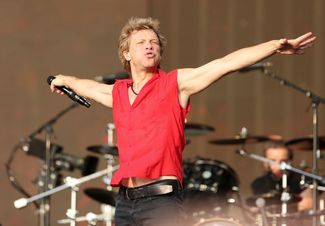
Simone Joyner
CLEVELAND, Ohio — It’s that time of year again for people to get enraged. That’s because the nominations for the Rock and Roll Hall of Fame’s Class of 2020 are due any day now.
But before we get to whether newly eligible acts like Oasis, The Notorious B.I.G. and Weezer will make the cut, or if longtime snubs like Depeche Mode, Doobie Brothers or Kraftwerk will finally get in, let’s take a look back.
Like most Halls of Fame, the Rock Hall can be polarizing. While, you can make an argument for just about any artist that has been inducted, there are a few dozen fans will swear have no business in music’s hallowed ground.
In an effort to upset as many people as possible (Not really, but it’s inevitable), we ranked the 25 worst Rock and Roll Hall of Fame selections of all time. You know, the ones that had you scratching your head wondering why them and not [insert snub here].
This is just one man’s opinion, of course. Just remember: They’re all good, if not great artists. But were they Rock Hall worthy?
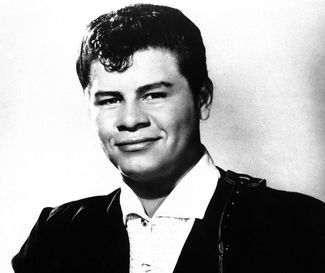
AP
25. Ritchie Valens
Inducted: 2001
Better option: Link Wray
Associated with “American Pie” (“The Day the Music Died”) after passing away tragically in a plane crash alongside Buddy Holly and The Big Bopper, Valens is a legend. But digging deeper, his Rock Hall resume is pretty light. Yes, he was the pioneer of Chicano rock. And yes, “La Bamba” was a huge hit. But that alone should not have earned him induction when you consider other genre pioneers/one-hit wonders such as Screamin’ Jay Hawkins and Big Mama Thornton have never even been nominated. There were several better options for the Class of 2001 when it comes to 1950s rock and roll pioneers, top among them being Link Wray.

Victoria Will
24. Darlene Love
Inducted: 2011
Better option: Mary Wells
You’d be hard pressed to find a Rock Hall Inductee more lovable than Darlene Love. An essential figure in Phil Spector’s Wall of Sound, Love was (and still is) a great singer. That, along with “Christmas (Baby Please Come Home)” are her two main arguments for Rock Hall Induction. But you can’t help but wonder why her and not The Marvelettes or Mary Wells, two essential acts for early Motown with bigger hits to their names.
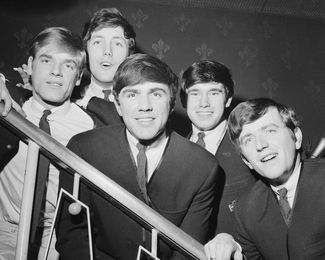
Chris Ware
23. The Dave Clark Five
Inducted: 2008
Better option: Lonnie Donegan
Well, this is sure to upset a lot of baby boomers who still geek out to “Glad All Over.” The Dave Clark Five was a very popular British Invasion act of the 1960s, and the second British act after The Beatles to appear on the “The Ed Sullivan Show.” But The Dave Clark Five’s resume, even compared to just other acts of the 1960s, makes them a borderline Rock Hall candidate. Are they that different from The Crystals, Tommy James & The Shondells, The Shangri-Las or Paul Revere & the Raiders: All acts you could argue for or against? A better choice would have been Lonnie Donegan, the most influential recording artist in British history before The Beatles came around.
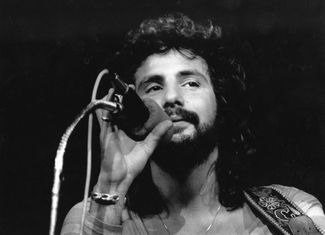
Getty Images
22. Cat Stevens
Inducted: 2014
Better option: Nick Drake
Cat Stevens had a great run during the first half of the 1970s, with two very essential albums and a string of hits. But you have to wonder how the Rock Hall landed on his name instead of a wide variety of 1970s acts that have never even been nominated, from Doobie Brothers to Emerson, Lake & Palmer to Jim Croce. Even in his own genre, you could make a better case for Nick Drake who, as time goes on, feels like a better choice than Stevens, given how the former’s influence continues to be felt in the artists of today.
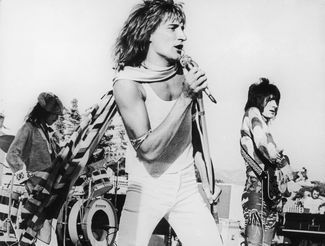
Keystone Features
21. Small Faces/Faces
Inducted: 2012
Better option: New York Dolls
It’s easy to see why fans of bands like Mott the Hoople, J. Geils Band or Little Feat might cry foul that their favorite act isn’t in the Rock and Roll Hall of Fame and Small Faces/Faces are. We’re dealing with a combination of two acts here, a la Parliament-Funkadelic (Though, far less significant). The talent and, to a lesser extent, influence are there. Both the Small Faces and, more so, Faces’ back-to-back to basics style and care-free attitude would influence several acts of the 1970s. But in that regard, the impact of, say, the New York Dolls was much greater. After all, Rod Stewart and Ronnie Wood were going to get in anyway.
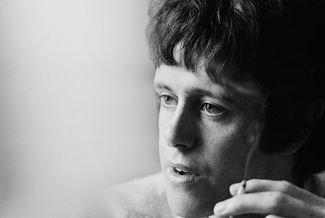
Getty Images
20. Donovan
Inducted: 2012
Better option: Phil Ochs
A lesser Bob Dylan? Sure. But you could say that about any folk artist really. Donovan’s impact runs deeper, primarily in his merger of folk music with psychedelic pop. But where Donovan falls short is in having just a handful of hits that resonated in the States. That’s not enough to justify his induction over artists who came before such as Phil Ochs or Judy Collins. And how the Nominating Committee saw fit to nominate Donovan years before Joan Baez is beyond me.
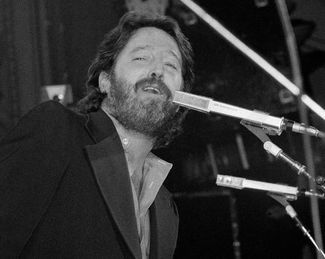
AP
19. The Paul Butterfield Blues Band
Inducted: 2015
Better option: John Mayall’s Bluesbreakers
Let’s face it. Before being nominated for the Rock and Roll Hall of Fame multiple times, most mainstream music fans had never heard of The Paul Butterfield Blues Band. That doesn’t mean the band wasn’t impactful. The Paul Butterfield Blues Band was integral in bringing Chicago blues to white, suburban audiences in the 1960s. But the band’s lack of “Fame” and the fact that an landmark blues artist like Son House shockingly can’t get a nomination makes you question how The Paul Butterfield Blues Band got on the ballot, let alone chosen over Kraftwerk, Nine Inch Nails, Chic and others nominated for the Class of 2015.
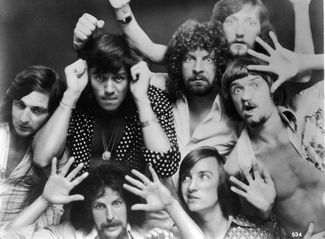
Hulton Archive/Getty
18. Electric Light Orchestra
Inducted: 2017
Better option: Jethro Tull
When you take into account Jeff Lynne’s production legacy, then you can make a solid case for Electric Light Orchestra’s Rock Hall worthiness. But the band on its own — I’m just not seeing it. ELO got in as part of the Nominating Committee’s surge in recent years to include B (or maybe even C) level classic-rock acts. But nothing really puts Electric Light Orchestra ahead of other 1970s acts s like The Guess Who, Bad Company or Bachman-Turner Overdrive. Then again, I wouldn’t induct those bands either.
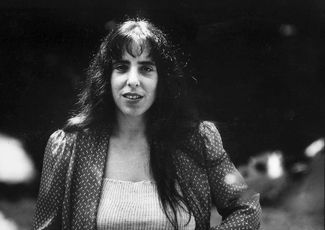
AP/Los Angeles Times
17. Laura Nyro
Inducted: 2012
Better option: Judy Collins
Laura Nyro is one of the first names that comes up when people list the least deserving members of the Rock and Roll Hall of Fame. And it’s easy to see why. It feels like her nomination was plucked out of thin air. That doesn’t mean she wasn’t a great artist. Nyro most certainly was. But she feels somewhat fringe compared to almost any other inductee. She’s sort of like a lesser Randy Newman, where as the Rock Hall could have opted for someone with more influence like the aforementioned Judy Collins.
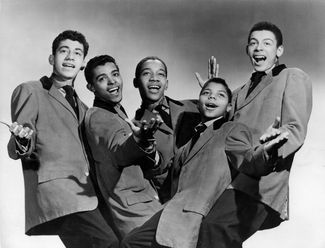
Getty Images
16. Frankie Lymon & the Teenagers
Inducted: 1993
Better option: Billy Ward and His Dominoes
Frankie Lymon and the Teenagers were nominated for the Rock Hall every year since the beginning until they were inducted in 1993. Why did the Nominating Committee have the group on par with the greatest rock and roll acts of all time. Sure, Lymon has a compelling story as a child star who died young. But while the lack of noteworthy catalog has kept other influential 1950s acts out of the Rock Hall, namely Johnny Ace and Jesse Belvin, it didn’t affect Lymon. Maybe in the “Early Influences” category this makes sense. Otherwise, can most people name anything besides “Why Do Fools Fall In Love?”
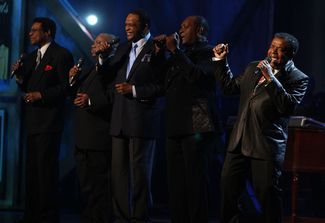
Stephen Lovekin
15. Little Anthony and the Imperials
Inducted: 2009
Better option: Ben E. King (solo)
Little Anthony and the Imperials’ longevity is impressive. Of all the acts come out of doo-wop and move into R&B, few, if any, had a longer run. But the significance of that run is debatable, especially when you start rifling off the list of influential R&B artists that aren’t in the Rock and Roll Hall of Fame: Joe Tex, Mary Wells, Junior Walker & the All Stars, Ben E. King (solo), The Crystals, etc.
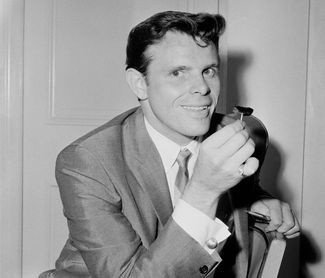
George Konig
14. Del Shannon
Inducted: 1999
Better option: Chubby Checker
It must have been easy to get behind the idea of Del Shannon being in the Rock and Roll Hall of Fame when artists like Tom Petty and Jeff Lynne practically worshiped the ground he walked on. But Shannon is one of those artists whose legacy is really built around just one song in “Runaway.” Yes, it was a No. 1 hit and Shannon had a distinct style. But why him and not someone like Chubby Checker or Tommy James & The Shondells.
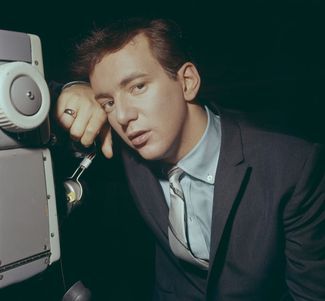
Getty Images
13. Bobby Darin
Inducted: 1990
Better option: Screamin’ Jay Hawkins
Looking at the list of successful artists of the 1950s, Bobby Darin certainly has some of the deccade’s biggest hits, including “Splish, Splash” and “Mack the Knife.” But how much those songs resonated in the decades that followed? Darin was a famous star who became an actor. But musically, it would have benefitted the Rock Hall to have pushed for an artist with a more unique style and sound.
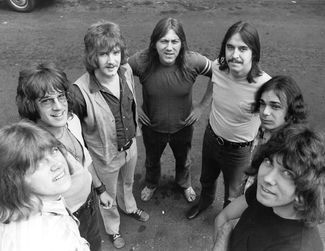
Ian Showell
12. Chicago
Inducted: 2016
Better option: Procol Harum
Saying Chicago was a successful band during the 1970s would be an understatement. But even after selling all those records, they never really felt like a larger than life act. And when they came close, they morphed into a lame soft rock act with songs like “You’re the Inspiration” and “Hard to Say I’m Sorry.” Yes, Chicago brought horns into rock in the 1970s. But they weren’t the first or, arguably, the best at it, considering the Mothers of Invention and Electric Flag haven’t been nominated.
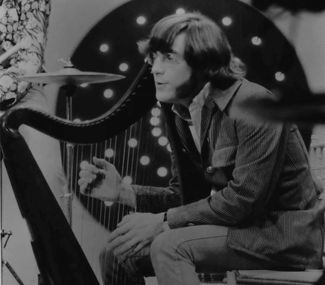
Plain Dealer Historical Archive
11. The Lovin’ Spoonful
Inducted: 2000
Better option: The Shangri-Las
I’m okay with kicking The Lovin’ Spoonful out of the Rock Hall based on the band’s Induction Ceremony performance alone. Yes, the band had some hits during the 1960s. But they weren’t a game-changer the level of peers like Grateful Dead or The Mamas and the Papas. And in terms of the 1960s as a whole, you have to imagine the impact of act like Joe Tex or The Shangri-Las stretches much further. Heck, I’d take The Monkees over these guys all day, everyday.
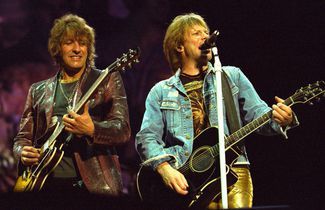
Robert Cianflone
10. Bon Jovi
Inducted: 2018
Better option: Iron Maiden
If we’re talking just commercial appeal, record sales and longevity, by all means Bon Jovi belongs in the Rock Hall. Influence and authenticity? Not so much. I could get behind the band’s induction more had Desmond Child been included, since there’s something to be said for the songwriting on choruses to songs like “Livin’ on a Prayer.” As it stands, however, I don’t see any significant changes to the history of rock music if Bon Jovi never existed, other than the Goo Goo Dolls never becoming a band or there being fewer songs to sing along to at weddings. Why Bon Jovi and not Boston, Thin Lizzy or Bad Company?
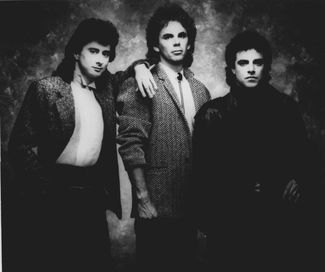
AP
9. Journey
Inducted: 2017
Better option: Duran Duran
The arguments for and against Journey and Bon Jovi are the same. Only, Journey fans are even more passionate, and, thus, more likely to slash the tires on my car. Yes, “Don’t Stop Believin'” is an indelible pop song. But you know who else made at least one indelible pop song? Duran Duran, Whitney Houston, the Go-Go’s and INXS, each not in the Rock Hall despite having more influence on today’s music landscape than Journey. Whose getting in next: Nickelback?
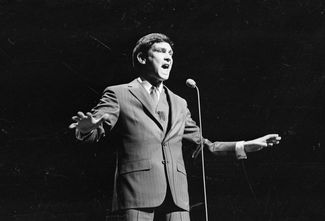
M. McKeown
8. Gene Pitney
Inducted: 2002
Better option: Harry Nilsson
There’s a case to be made for Pitney in a specialty category, considering his work as a sound engineer and songwriter on hits like “He’s a Rebel” and “Hello, Mary Lou.” But as a “Performer” it doesn’t make much sense. His impact during the 1960s doesn’t measure up to other acts that aren’t in the Rock Hall like Love, Dick Dale or Jan and Dean.
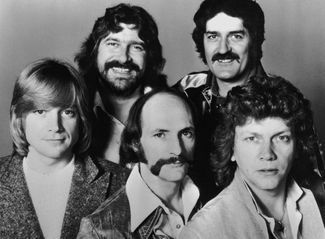
Getty Images
7. The Moody Blues
Inducted: 2018
Better option: King Crimson
The Moody Blues made good (if not boring) music, some of it great. But this an example of the Nominating Committee and its Boomer voters preferring a second- or third-tier classic rock act rather than a top-tier band from a later decade. The Moody Blues certainly weren’t the kind of groundbreaking act snubs like T. Rex, The Jam or Kraftwerk were.
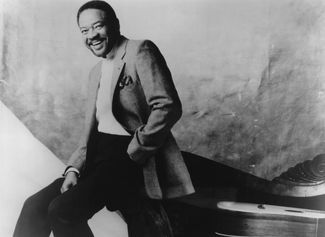
Plain Dealer Historical Archives
6. Bill Withers
Inducted: 2015
Better option: Lionel Richie and the Commodores
Bill Withers is a fine R&B act with a handful of great soul songs. But even within his own genre, maybe (MAYBE) he rates as one of the 100 most important R&B acts of all time and certainly isn’t in the top 50. The Nominating Committee seemingly pulled Withers’ name out of thin air and voters went for it, despite there being several better options in the forms of Chic, Luther Vandross, Kool & the Gang, Barry White, Rick James, The Commodores and The Ohio Players. I could go on.
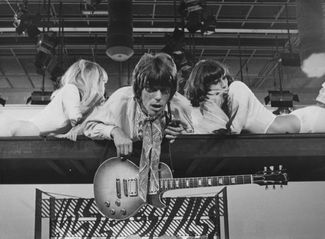
Getty Images
5. Jeff Beck
Inducted: 2009
Better option: Dick Dale
If prior to 2009, Jeff Beck felt like a Rock and Roll Hall of Famer, it’s because he was as a member of the Yardbirds, and rightfully so. But there was no reason for him to become a two-time inductee, other than the Rock Hall wanting to put together a guitar showcase at its annual ceremony. Beck is undoubtedly one of the greatest guitarists of all time. But his solo career leaves something to be desired in terms of significance.
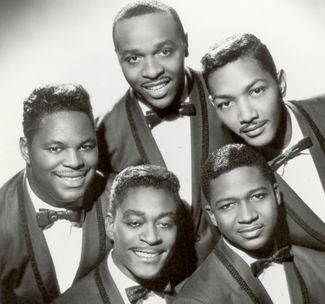
Promotional Handout
4. The Dells
Inducted: 2004
Better option: Teddy Pendergrass
If you find something significant that separates The Dells from a large group of other like-minded R&B/doo-wop acts from the same period, please let me know what it is. The Dells have one (“Oh What a Nite”), maybe two (“Stay In My Corner”) essential hits, which somehow got them into the Rock Hall ahead of The Dramatics, The Stylistics, Harold Melvin, Teddy Pendergrass, The Dramatics, The Spinners, The Del Vikings and The Chi-Lites, among others.
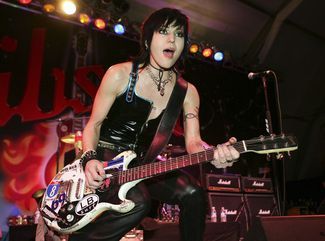
Ethan Miller
3. Joan Jett and the Blackhearts
Inducted: 2015
Better option: The Runaways
This concept of Joan Jett as the archetype of the female rock star is a bit weird. Yes, when you think of a woman with a guitar, she comes to mind. But she did not invent that or do anything with it that hadn’t been done before. In fact, her two biggest hits are cover songs. The fact that Joan Jett & the Blackhearts are in the Rock Hall and The Shangri-Las aren’t is a bit absurd. That’s not to say Jett doesn’t belong in the hall. She’s just in there with the wrong group. The Runaways were far more essential.
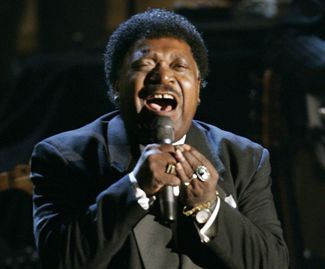
Timothy A. Clark
2. Percy Sledge
Inducted: 2005
Better option: Joe Tex
There’s a thought among some people that a push for Percy Sledge to get into the Rock Hall was made after he performed at Steve Van Zandt’s wedding. I’m going to ignore that, only because, if true (which it may very well be), it’s INSANE! Sledge has one hit. That’s not discredit his other work. That’s just a fact. “When a Man Loves a Woman” is all anyone knows. Does that make him influential? Sledge was an important artist in terms of southern soul in the 1960s or, better yet, “When a Man Loves a Woman” was an important song, one of the essential hits of the decade. But, in terms of body of work, there just isn’t much else there.
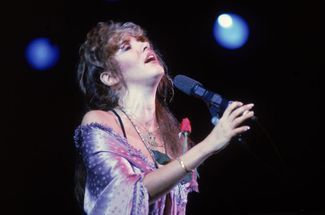
Hulton Archive/Getty Images
1. Stevie Nicks
Inducted: 2019
Better option: Tina Turner
If the Rock and Roll Hall of Fame were to admit Stevie Nicks was nominated because she finished first in the “Voice Your Choice” in-museum fan vote, I’d let this go. However, the Rock Hall Foundation has said the vote had no influence on the committee. So we’re left to wonder why Nicks was worthy of becoming the first two-time female inductee. To say Nicks has more than one essential album or song would be a reach. And while she’s an influential figure, most of that (if not all of it) can be chalked up to her time with Fleetwood Mac. The list of women who have had better solo careers than Nicks is too long to list here. So, I’ll just list the women who would have made better two-time inductees, which includes Tina Turner, Diana Ross and Grace Slick.
from Heavy News https://thisisheavynews.com/25-worst-rock-and-roll-hall-of-fame-inductees-ever/
0 notes
Text
My Favorite Albums of the 60′s
Here is a list of what i personally think are the best albums of the 60′s. Obviously, i am only going from my own taste, which can be a little narrow, limiting in the grand scheme of genres, as well as what i have heard. There are numerous individual songs from multiple other musicians that i have listened to more extensively, but never felt hugely influenced by the album itself. There are a lot of songs from the fifties and sixties that i generally listen to in their greatest hits form, or on their own. This is especially the case with a lot of the early r&b, girl groups some of which never had the opportunity to really make an album but instead had multiple singles, but also with bands like the lovin’ spoonful, whom i love but never really connected to album wise.
(1960) Have Guitar, Will Travel – Bo Diddley
(1963) Please Please Me – The Beatles
(1964) Bitter Tears (Ballad of the American Indian) – Johnny Cash
(1964) Folk Roots, New Routes – Shirley Collins
(1964) Another Side of Bob Dylan – Bob Dylan
(1964) The Times They Are A-Changin' – Bob Dylan
(1965) Bring it All Back Home – Bob Dylan
(1965) December's Children – The Rolling Stones
(1965) Orange Blossom Special – Johnny Cash
(1965) The Who Sings My Generation – The Who
(1966) Buffalo Springfield – Buffalo Springfield
(1966) How Does That Grab You – Nancy Sinatra
(1966) Lightfoot - Gordon Lightfoot
(1966) Phil Ochs in Concert – Phil Ochs
(1966) Revolver – The Beatles
(1966) The Very Special World of Lee Hazlewood – Lee Hazlewood
(1967) All Our Own Work – Sandy Denny & the Strawbs
(1967) Between the Buttons – The Rolling Stones
(1967) Buffalo Springfield Again – Buffalo Springfield
(1967) Chelsea Girl – Nico
(1967) Sgt. Peppers Lonely Hearts Club Band – The Beatles
(1967) Something Else – The Kinks
(1967) Strange Days – The Doors
(1967) The 500 Spirits Or the Layers – The Incredible String Band
(1967) The Doors – The Doors
(1967) The Velvet Underground & Nico – The Velvet Underground
(1967) Their Satanic Majesties Request – The Rolling Stones
(1968) Astral Weeks – Van Morrison
(1968) At Folsom Prison – Johnny Cash
(1968) Just Roll Tape, April 26 1968 – Stephen Stills
(1968) Last Time Around – Buffalo Springfield
(1968) Odessey & Oracle – The Zombies
(1968) The Kinks are the Village Green Preservation Society – The Kinks
(1968) The Marble Index - Nico
(1968) Tim Hardin 3 Live in Concert – Tim Hardin
(1968) Waiting For the Sun – The Doors
(1969) Arthur, Or the Decline and Fall of the British Empire – The Kinks
(1969) Everyone Knows This Is Nowhere – Neil Young
(1969) Green River – Creedence Clearwater Revival
(1969) Joy of a Toy – Kevin Ayers
(1969) Led Zeppelin II – Led Zeppelin
(1969) Led Zeppelin – Led Zeppelin
(1969) Liege & Lief – Fairport Convention
(1969) Looks Like Rain – Mickey Newbury
(1969) Songs From a Room – Leonard Cohen
(1969) Space Oddity – David Bowie
(1969) The Soft Parade – The Doors
(1969) The Stooges – The Stooges
(1969) The Velvet Underground – The Velvet Underground
(1969) Townes Van Zandt – Townes Van Zandt
(1969) Unicorn – Tyrannosaurus Rex
4 notes
·
View notes
Text
NEW YORK — During the summer of 1966, a heat wave boiled New York City at the most brutal temperatures recorded since 1869, the year weather data began to be consistently collected.
The Vietnam War was also heating up, with 382,010 men drafted into service that year, 151,019 more than the previous year.
Opposition to the war as well as to chronic discrimination against blacks, women and gays was gathering steam in the city. Clashes broke out elsewhere, with race riots that summer in Chicago and in Lansing, Michigan.
“America was convulsing in a way, a time of huge unrest, incredible violence,” said Jon Savage, author of “1966: The Year the Decade Exploded.”
On Aug. 1, in Austin, Texas, a lone gunman introduced the United States to mass murder. Charles Whitman killed his mother and wife and then more than a dozen people, sniper-style, from the University of Texas’ clock tower, wounding more than 30 others.
Meanwhile, “Summer in the City,” a propulsive, apolitical rock song by the Lovin’ Spoonful, based in New York, was climbing the charts to No. 1, reassuring listeners that “despite the heat it’ll be all right.” Sung and co-written by John Sebastian, the band’s frontman, the song was conceived by his younger brother, Mark Sebastian, when he was just 14. Steve Boone, the bass player, contributed the memorable instrumental interlude. The three shared writing credit and continue to reap royalties: The song has endured as an anthem for every heat wave since and has been covered by Quincy Jones, Joe Cocker and Isaac Hayes, among others.
(It will most likely figure prominently at a concert, “Music and Revolution: Greenwich Village in the 1960s,” on Sunday at Central Park’s SummerStage, where John Sebastian is part of a lineup that includes José Feliciano and Maria Muldaur.)
In addition to John Sebastian and Boone, the original band members (Mark was too young) were Zal Yanovsky on guitar and Joe Butler on drums. Their producer, Erik Jacobsen, helped shape their 1965 debut album, “Do You Believe in Magic,” and their 1966 follow-up album, “Daydream.” Their manager, Bob Cavallo, masterminded the business end. In 1966, the group also supplied the soundtrack to Woody Allen’s “What’s Up, Tiger Lily?” They toured extensively and, with their rapid rise to fame, found themselves in need of more material. One day, Sebastian heard something intriguing from his younger brother.
JOHN SEBASTIAN (frontman): Mark really was the beginning of the song. Hot town, summer in the city … but at night it’s a different world. “Hey, hold on, what’s that?” I said.
MARK SEBASTIAN (songwriter): I recently found the songbook I wrote it in, in pencil. My brother, who’d moved out by then, was back home visiting and listened to what I’d written.
__
The song soon became a contender for the band’s next album, which they were under pressure to produce quickly. “Cavallo had us on the road so much that we never had the luxury of dedicated periods of recording,” said Steve Boone, the bass player. By March 1966, just a few months after wrapping “Daydream,” they were back in the studio to record what would become “Hums of the Lovin’ Spoonful,” which would feature “Summer in the City.” From the beginning, the band was excited about the single’s potential, no matter that it began with a dreamy adolescent longing to break out of his family’s tony residence, tucked between Macdougal Street and Waverly Place.
__
MARK SEBASTIAN: Our family’s apartment was at 29 Washington Square West, the 15th floor; my bedroom looked out over the Hudson. I wanted to run away, go down by the docks, dreaming of whatever this romance thing was, having a band of my own. There was all this music out in Washington Square Park, girls that came down from the Bronx, really sexy, chewing gum, and I was still too young to talk to them without fainting.
JOHN SEBASTIAN: Eleanor Roosevelt lived across the hall in the 1940s when we first moved in. My mom, Jane Bishir, was a Midwestern girl who’d come to New York to make it as a writer and became the closest of friends with Vivian Vance long before she was on “I Love Lucy.” She was my godmother. My godfather was the best baby sitter on God’s green earth, Garth Williams, the illustrator for all these wonderful books. He would be doodling, and there was one evening where he showed me three or four spiders: “Which spider do you like?” He and E.B. White were going around the bend to avoid the Disneyfication of “Charlotte’s Web,” and he wanted to try it out on a kid. My dad was a classical harmonica player and good friends with Burl Ives, who asked him if we could let this songwriter from Oklahoma stay at our house for a while. So I’m in bed, and in the next room I hear Woody Guthrie singing and playing, and in my total infancy I thought, “He’s not as good as Dad.” It’s not a memory I’m proud of.
STEVE BOONE (bass guitarist): John not only grew up in Greenwich Village, he was there when folk musicians and bands started writing their own songs and actually playing their instruments on the recordings. In the ‘50s and early ‘60s, record companies would hire songwriters and studio musicians, and the artists would come in and sing. The rock scene began with this gestation period in the Village.
__
John Sebastian was steeped in a rivalrous fraternity of folk, roots, blues and jug-band artists at coffeehouses and basement hangouts on West Third, Macdougal and Bleecker streets. He saw the careers of Bob Dylan, Joan Baez and Jimmy James (later known as Jimi Hendrix) and the Blue Flames take off from cramped stages. Playing harmonica, guitar and autoharp, he began to accompany a variety of artists, influences that bore fruit when he turned to songwriting.
Sebastian’s friend Cass Elliot introduced him to Yanovsky, a Canadian who played in her folk group, the Mugwumps, along with Denny Doherty. After they split up, Elliot and Doherty co-founded the Mamas and the Papas while Sebastian and Yanovsky formed the Lovin’ Spoonful, taking their name from a Mississippi John Hurt song, “Coffee Blues.”
In February 1965, their tryout at the Night Owl Cafe, formerly at 118 W. Third St., was a disaster. Joe Marra, the club’s owner, now 85, was known for presenting the likes of Tim Hardin, Fred Neil, Tim Buckley, Stephen Stills, Richie Havens and James Taylor. He gave Cass Elliot a job as a hostess.
__
JOHN SEBASTIAN: We got fired.
JOE BUTLER (drummer): We were living in the same room at the Albert Hotel, the four of us in the same goddamn bed, a laundry cart with all our instruments. We’d roll it down to the basement to rehearse, water bugs running around.
SEBASTIAN: I had an apartment, but maybe I’d end up there overnight now and then. It’s where I wrote “Do You Believe in Magic.”
BUTLER: The Paul Butterfield Blues Band rehearsed in the ballroom. A lot of musicians were living in that place on the sly. So were Denny and Cass, who were still with the Mugwumps. Basically, Denny was romancing the manager, so he was our meal ticket. We had a secret entrance, hiding in rooms, and never paid. I was just out of the Air Force, my father was a cop, and I grew up in Great Neck, so I wasn’t as bohemian as they were. I was 23, the oldest in the group. If you were lucky, you got to sleep on the floor in Butchie’s room.
BOONE: Butchie was the Lovin’ Spoonful’s stepmother at the hotel, funny, cheerful, encouraging. I wrote “Butchie’s Tune” for her, how she was the greatest, but I wasn’t attracted to her.
SEBASTIAN: She was a pal of my producer who overheard me talking about the draft, how I was the right age to get taken. She said, “Oh, I’ll marry you.” It was a technical marriage. She ended up marrying Bob Denver.
JOSHUA WHITE (pioneer of psychedelic light shows): We were getting deeper and deeper into Vietnam. Everyone, including the Lovin’ Spoonful, was subject to the draft, and you were going to die, your life under that dangling sword. People were doing all kinds of things to better their chances — getting married, having children, becoming teachers, looking over their shoulders.
SEBASTIAN: We immediately got into Cafe Bizarre, a tourist trap. We did eight sets a day for $25 a week and all the tuna fish sandwiches you could eat. Joe Marra gave us another shot at the Night Owl, and we were ecstatic when we saw a 16-year-old girl from Queens dancing to our music. The next week a ton of girls showed up.
JON SAVAGE (“1966” author): There was magic between the four of them, and Zal Yanovsky was the wild card. You always need a wild card, somebody who’s going to rip it up. London was over, everybody knew that, and New York became the pop center of the world, strong with the Lovin’ Spoonful and the Rascals, the Brill Building not dead yet.
BUTLER: I was fascinated by Zally. Harpo Marx with a guitar, a genius who could play anything.
ZOE YANOVSKY (Zal Yanovsky’s daughter): Zalman was a bit of a street urchin, somewhat homeless, and had roamed around Israel playing guitar. There’s a mythical story about him coming back to Toronto and living in a laundromat before going to New York.
GERRY GIOIA (guitarist and composer): When I played in the Village back then I’d get $10, but that would buy you 10 pizzas. Music was everywhere, street performers, smells of sausage heroes, coffee beans, people walking up and down the streets trying to look as freaky as possible. It was like Paris in the ‘20s, the Harlem Renaissance, things that come and go, and you don’t realize it until it’s gone.
GENE SCULATTI (author of “Tryin’ to Tell a Stranger ‘Bout Rock and Roll”): The Lovin’ Spoonful and the Byrds were the first of the groups that really comprised hipsters, ex-folkies and dope smokers. When you first saw them, they were like the Rolling Stones, dressed in street clothes, not uniforms.
__
In late 1965, the Lovin’ Spoonful toured the South with the Supremes, chronicled in Steve Boone’s memoir, “Hotter Than a Match Head: Life on the Run with the Lovin’ Spoonful” (2014). They were taunted for having long hair and witnessed naked racism. “Segregation was supposed to be over,” Butler said, “but Zally was out there, animated and loud, and guys started coming for us, saying, ‘Should we shave their heads?’” People at a diner started using racist jeers. “Zally grabbed a fork, ready to take somebody’s eye out so he’d never forget what he said to us that day.”
The band toured overseas, and on May 20, 1966, after triumphant gigs in England, Sweden and Ireland, rubbing elbows with the Rolling Stones and the Beatles, Yanovsky and Boone were arrested in San Francisco for marijuana possession.
__
BOONE: We hadn’t even gone a block from the house where the party was, and they immediately wanted to search the car. It may have been a setup. The chief of police said he’d put Zally on a plane to Canada tomorrow, not be allowed back in. We were young and scared and made a deal to introduce a cop as a friend of ours to our crowd. I wish we had said, “See you in court.”
__
The bust did not immediately make the news, and the band went on to perform in Los Angeles and on various television shows. In July, “Summer in the City” was released, a song recorded before they left for Europe.
__
MARK SEBASTIAN: That summer, I was in the Loire with my mom dragging me around to châteaus. I wanted to be in New York and hear “Summer in the City” playing from the window. My mom rented a radio. I heard “I Want You” from Dylan, then started to hear my song. I was in shock. What I’d written was more of a mellow ballad, and John took it to this whole other place that was aggressive and exciting and fun.
ERIK JACOBSEN (producer): We had Roy Halee, a fabulous engineer at Columbia, put in these sound effects of a drill and traffic and a legitimate big-time fade at the end.
BOONE: Until “Summer in the City,” we were not accepted wholeheartedly by the rock scene.
BUTLER: And we were playing our own instruments, not using the Wrecking Crew like the Byrds and the Beach Boys.
JOHN SEBASTIAN: There was no love lost between us and rock critics.
BOONE: That song changed everything. We had street cred. It was really also the end of the Spoonful, the tipping point. From that point on, there was this tiny pinhole in the balloon that started leaking.
SAVAGE: “Summer in the City” is almost an avant-garde piece, that stuttering piano, the noises of the city in the middle. It’s an edgy record, not a peaceful record. It was their fifth Top 10 single in under a year. They were on an insane schedule.
BUTLER: We were designed to burn out, like a light bulb that was overamped. We were on the road all the time, and our heads got swelled up with how popular we were and how much the girls loved us. We were unable to support each other.
SAVAGE: Within two years, they released at least three full albums, two soundtrack albums and had nine Top 20 singles. It’s not surprising relationships fracture under that pressure. How are you going to keep it up?
__
As much as Boone and Butler professed their love and admiration for Yanovsky, they noticed his mood darken after the drug arrest. During that period, Jacobsen described him as “an impossible guy capable of guerrilla warfare.” There was also a love interest — isn’t there always? — that got in the way. In 1967, it came to a head.
__
BOONE: Zally quit the band emotionally and then got fired. It was well after “Summer” was a hit record that anybody even knew about the drug bust. It got out in the underground press in California.
SAVAGE: Their name was mud for fingering their source. It was a great shame that young people were put under that kind of pressure for making a mistake. They were very badly advised and intimidated by the police.
ZOE YANOVSKY: Zalman may have had a certain element of self-sabotage. On “The Ed Sullivan Show,” he purposefully sang the wrong lyrics. But those are the great partnerships in life and in rock ‘n’ roll, opposites attracting. John is very sincere, and Zalman was very much in your face.
SAVAGE: Once the band lost Zal, it became something different. Los Angeles, and in particular, San Francisco, was positioning itself as the next center of pop.
__
Yanovsky released a solo album, “Alive and Well in Argentina,” drove a cab in Toronto and became a restaurateur in Kingston, Ontario. He died of a heart attack in 2002, just shy of his 58th birthday.
Richard Barone, a musician who released the album “Sorrows & Promises: Greenwich Village in the 1960s” in 2016, and is hosting Sunday’s SummerStage show dedicated to the era, said that by 1968, “Greenwich Village was over, a commercial commodity.”
John Sebastian, 74, quit the Lovin’ Spoonful in 1968 to go solo, and he played an unscheduled set at Woodstock in 1969. “I’ve gone in and out of style five times since then,” he said. On a recent visit from Woodstock, where he has lived with his wife, Catherine, since 1976, he retraced his old Village route, more exuberant about the memories than wistful. “It’s all gone,” he said, “but so are the crooners. Everybody has their turn. When did I leave? The real answer is I’ll never leave the Village. It’s mine.”
__
New York Summer Songs
John Schaefer, the host of “New Sounds” on WNYC, shares his selection. Here are six of them; the full list is at nytimes.com/metropolitan.
— “Dancing in the Streets” by Martha and the Vandellas. Detroit can rightly claim this ultimate summer song, but the lyrics are more inclusive: “They’re dancing in Chicago/ Down in New Orleans/ In New York City.”
— “Up on the Roof” by the Drifters. From the songwriting team of Carole King and Gerry Goffin, this classic’s lyrics never actually mention “summer in New York,” but with its “rat race noise down in the street” and its rooftop air so “fresh and sweet,” it’s got to be.
— “Summertime” by DJ Jazzy Jeff & the Fresh Prince. Jazzy Jeff and a young Will Smith were not New Yorkers, but this 1991 tune is built on “Summer Madness,” from Jersey City’s own Kool & the Gang.
— “Crazy in Love” by Beyoncé, featuring Jay-Z. The king and queen of New York ruled summer 2003 with this sweaty, Chi-Lites-sampling dance tune.
— “Rockaway Beach” by the Ramones. Because even punks need a break from being cool to be, you know, cool.
— “Bang Bang” by Joe Cuba. The tradition of great Latin summer hits includes last year’s “Despacito” by Luis Fonsi, “Gasolina” by Daddy Yankee in 2004 and any number of Fania All-Stars tunes from the ‘70s. But it all began in New York in 1966, with this irresistible number.
This article originally appeared in The New York Times.
Julie Besonen © 2018 The New York Times
Go to Source Author: Julie Besonen Entertainment: An anthem for every urban summer NEW YORK — During the summer of 1966, a heat wave boiled New York City at the most brutal temperatures recorded since 1869, the year weather data began to be consistently collected.
0 notes